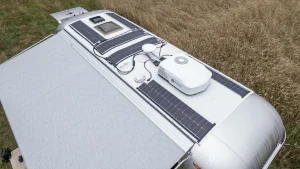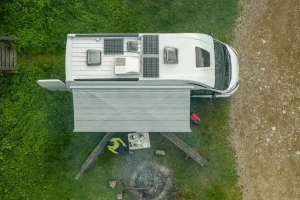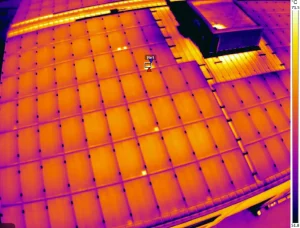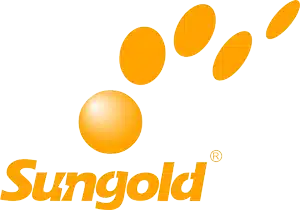Introduction: Why DIY Solar Kits Are Gaining Popularity
In recent years, do it yourself solar panel kits have surged in popularity. Rising electricity costs, growing environmental concerns, and technological advancements have driven more homeowners, RV travelers, and off-grid enthusiasts to consider DIY solar solutions. Whether you’re looking to lower your carbon footprint or simply reduce your electricity bill, a DIY solar kit offers an affordable and empowering way to harness solar energy without hiring a professional installer.
But how exactly do these kits work? What do they include? And are they right for your needs?
In this guide, we’ll cover everything you need to know about do it yourself solar panel kits, helping you decide whether this renewable energy solution fits your goals and lifestyle.
1. What Is a DIY Solar Panel Kit?
A do it yourself solar panel kit is a pre-assembled package containing all the essential components you need to set up a functional solar power system on your own. These kits are designed for individuals who prefer hands-on projects or want to avoid expensive installation fees.
Common Applications:
- Residential rooftops
- RVs, camper vans, and boats
- Garden sheds and garages
- Cabins or off-grid homes
- Emergency backup systems
2. What’s Included in a DIY Solar Kit?
While kits vary by brand and system size, most DIY kits include the following core components:
| Component | Description |
|---|---|
| Solar Panels | Convert sunlight into DC electricity. Often monocrystalline or polycrystalline. |
| Charge Controller | Regulates the voltage and current going into the battery from the solar panel. |
| Battery (Optional) | Stores solar energy for use when the sun isn’t shining. |
| Inverter | Converts DC electricity into AC to power appliances. |
| Mounting Hardware | Brackets and rails for securing the panels to a roof or ground frame. |
| Wiring & Connectors | Includes cables, fuses, and connectors to link all components together. |
| User Manual | Guides you through the step-by-step installation process. |
3. Benefits of DIY Solar Panel Kits
✅ Cost-Effective
Installing solar yourself can save up to 50% in labor costs. For small systems under 3kW, this can amount to thousands of dollars.
🔧 Customizable & Scalable
Many kits are modular—you can start small and expand your system later as needed.
🌱 Environmentally Friendly
Using solar energy reduces reliance on fossil fuels, lowering your carbon footprint.
🧠 Educational
Building your own solar system provides hands-on experience and a better understanding of how energy systems work.
🚫 No Permits Needed (Sometimes)
Small off-grid setups or portable kits may not require permits, depending on your location.
4. Step-by-Step Guide to Installing a DIY Solar Panel Kit
Here’s a simplified overview of how to install a basic do it yourself solar panel kit:
Step 1: Evaluate Your Energy Needs
Calculate your daily energy consumption in watt-hours. This helps you size the system correctly.
Step 2: Choose the Right Location
Select a location with maximum sunlight exposure—typically a south-facing rooftop or an open field.
Step 3: Mount the Solar Panels
Use the provided brackets and follow the angle recommendations for your region (usually 30°–45°).
Step 4: Connect the Charge Controller
Wiring goes from the solar panel → charge controller → battery.
Step 5: Connect the Inverter
The inverter connects to the battery and provides usable AC power for appliances.
Step 6: Test the System
Turn everything on and monitor output levels. Ensure all connections are secure and components aren’t overheating.
⚠️ Tip: Always follow the user manual and adhere to local electrical codes.
5. Key Considerations Before You Start
- Local Regulations: Check whether permits, inspections, or grid approvals are required.
- Battery Type: Lead-acid is cheaper; lithium-ion is lighter and lasts longer.
- Safety: Use gloves and insulated tools. Never install panels during rain or high winds.
- Efficiency: Clean panels regularly to maintain output.
6. Best Use Cases for DIY Solar Kits
| Use Case | Ideal Kit Type |
|---|---|
| RV or Van Life | 100W–400W foldable kits with lithium battery |
| Tiny Homes | 1kW–2kW off-grid kits |
| Garden Lighting | Small 12V kits with LED lights |
| Emergency Power | Portable solar generator kits |
| Cabin/Off-grid Setup | Full 3kW+ kit with battery bank |
7. Popular DIY Solar Kit Brands
- Renogy – Known for RV and portable systems.
- Eco-Worthy – Affordable, all-in-one off-grid kits.
- Bluetti – Premium portable solar generators.
- Jackery – Compact kits for camping and emergency use.
- Sungold Solar – Offers flexible, foldable, and anti-shade solar panel kits that are perfect for DIY installations in RVs, boats, and off-grid applications.
🛠️ Want a solar kit built for your lifestyle? Check out Sungold Solar’s official website for premium DIY solutions tailored to RVs, marine use, and custom off-grid systems.
8. Frequently Asked Questions (FAQs)
Q1: Are DIY solar kits worth it?
Yes, especially for small-scale or off-grid applications. They reduce costs and provide long-term energy independence.
Q2: Can I install a DIY solar kit on my house roof?
Yes, but grid-tied systems may require permits, inspections, and utility approval. For off-grid or small setups, this is often not necessary.
Q3: How long do solar panels last?
Most panels last 25–30 years with a gradual decline in efficiency over time.
Q4: What’s the difference between on-grid and off-grid kits?
- On-grid kits connect to your local utility.
- Off-grid kits include batteries and operate independently.
Q5: Can I upgrade my DIY solar kit later?
Absolutely. Many kits are expandable—just make sure your charge controller and inverter can support additional input.
Q6: Do I need electrical experience to install it?
Basic DIY skills are sufficient for small kits. For complex systems, consider hiring a licensed electrician for final inspections.
Conclusion: Is a DIY Solar Panel Kit Right for You?
Do it yourself solar panel kits offer a practical, cost-effective way to transition to renewable energy. Whether you want power on the road, at a cabin, or in your backyard, DIY kits are a flexible solution. With the right planning, you can reduce your energy bills, increase self-sufficiency, and contribute to a cleaner planet.
If you’re ready to take the first step toward energy independence, explore Sungold Solar’s DIY solutions—where innovation meets sustainability.







